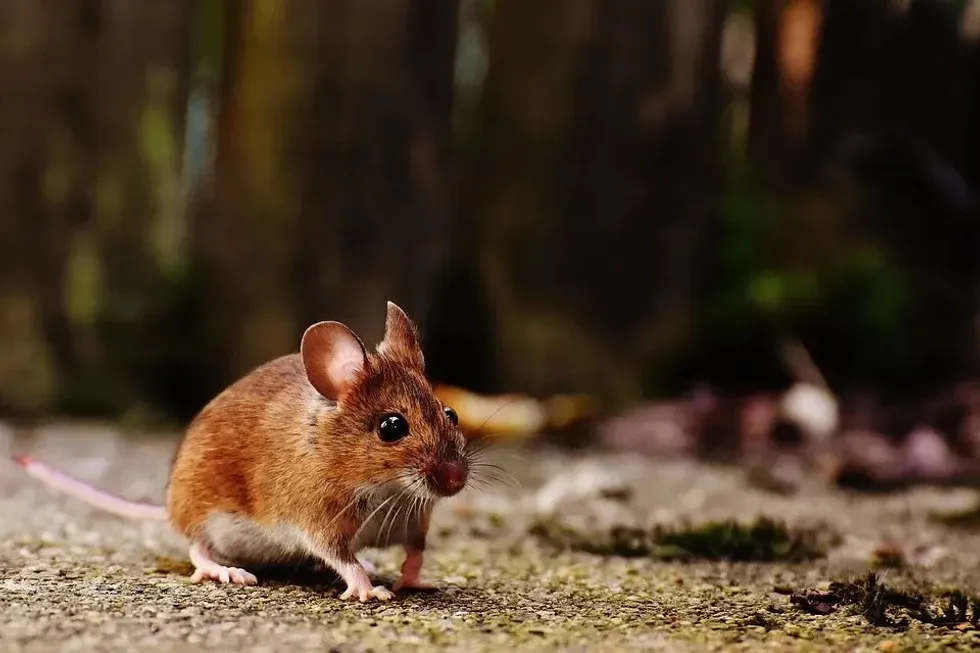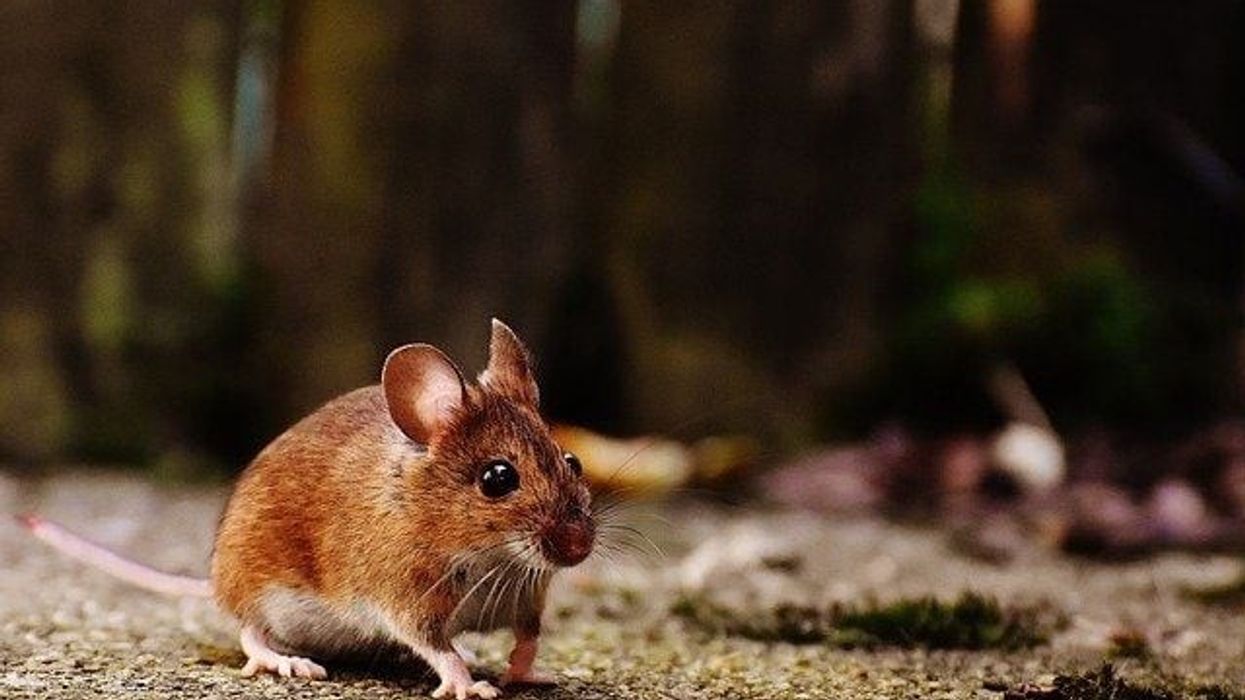Mice (singular: mouse) are one of the most common rodents found throughout the world. They are generally seen with a small body, long tail, and a pointed snout. However, depending on the location, they can have a varied appearance.
The house mouse (Mus musculus) is the most well-known member among mice. Mice are part of the Rodentia order. Under that, they are members of varied families, genera, and species.
Generally, you can differentiate rats from mice based on their size. A rodent of a larger size is known as a rat, while that of a smaller size is known as a mouse. Mice typically show nocturnal behavior.
They tend to have exceptional eyesight and hearing abilities. By remarkably inhabiting most of the different habitats we see around us, mice have become one of the most successful species in the world.
They are also good climbers and swimmers. Their use in the fields of science and research is also noteworthy. White mice are very commonly found in research laboratories.
To learn more about the various kinds of mice, continue reading our mouse facts! If you like this article, then you can also check out naked mole-rat and pika.
Mice Interesting Facts
What type of animal are mice?
A mouse is a type of rodent. They are highly adaptable and found in almost every location throughout the world.
What class of animal do mice belong to?
Mice belong to the class Mammalia. They are members of the order Rodentia.
How many mice are there in the world?
Since mice are found throughout the world, their exact populations are not known. According to the International Union for Conservation of Nature or IUCN, most of the mouse species show stable population trends, while a few like the Calomys expulus (Caatinga vesper mouse) are increasing in number.
However, some species like Podomys floridanus (Florida mouse) and Sicista armenica (Armenian birch mouse) have decreasing population trends.
Where do mice live?
Mice are found throughout the world in various kinds of areas. Depending on the region, the mouse species tend to vary.
For instance, the field mice or wood mice (Apodemus sylvaticus) are commonly seen in Africa and North-Western parts of Europe. Kangaroo mice (belonging to the genus Microdipodops) are seen in the United States. Out of all the mice, one of the most commonly found species throughout the world is the common house mice.
What is a mouse's habitat?
Mice have been able to adapt to different kinds of areas, and hence, their habitats are quite diverse. For example, the common house mice are usually found in cosmopolitan areas, in houses, and near buildings.
They can also be found in open fields. These mice have also been able to inhabit tundra and desert areas.
Apart from the house mouse, the deer mouse (member of the Cricetidae family) is seen in regions like alpine habitat, grassland, woodland, dessert, and so on. The way these creatures have adapted themselves to different ecological surroundings is quite remarkable.
Who do mice live with?
Mice form organized groups with a definite social hierarchy. Generally, there is one alpha male mouse at the top of these groups. A group of mice is known as mischief. When kept as pets, mice live with humans as well.
How long do mice live?
Mice usually only live for one or two years in the wild. Hence, it can be said that the mice lifespan is quite short in the wild. However, in captivity, some species of mice, like the deer mice, can live as long as eight years.
Most live for about four to five years. The main threat faced by mice in the wild is a range of predators. Snakes, birds, cats, and even some arthropods, are among those that prey on mice.
How do they reproduce?
Mice are known for their high reproduction rate. This is made possible because the female mouse experiences an estrous cycle or a fertile period right after they give birth. Hence, they can produce several litters in a smaller time span.
Usually, their breeding takes place throughout the year. The gestation period for mice is 19-21 days. In spiny mice, there is a gestation period of about 39 days, following successful mating.
Each litter has six to eight baby mice. For a deer mouse, the gestation period is shorter and does not last for more than 31 days (in the case of lactating females) or 26 days (in the case of non-lactating females).
Once baby mice are born, they are fully dependent on their mother. In many species, the baby is born without eyes and cannot survive without their parent. They are weaned from their mother after around three weeks.
What is their conservation status?
Most of the mice belonging to several families, genera, and species are marked as Least Concern in the International Union for Conservation of Nature or IUCN Red List. However, a few species do face several threats to their population and hence, have been marked as Critically Endangered, Endangered, Vulnerable, or Near Threatened.
For instance, the Santiago Galapagos mouse has been enlisted as Vulnerable and the Perote deer mouse has been marked as Critically Endangered. Habitat loss poses a serious threat for the various mouse population.
Mice Fun Facts
What do mice look like?
Mice are small and furry creatures. Their coat is usually black, brown, gray, or white in color. They also have little ears which appear rounded and a very long tail.
Sometimes, the tail is as long as their body. Most of the house mice are black or gray in color. The Florida mouse has a lighter brown or yellow-ish coat, while their belly area is white, whereas the deer mouse has a reddish-brown or gray body.
How cute are they?
Since mice are very small in size, they look very cute. This is the reason why lots of people keep mice as pets. The white mouse is an especially popular choice as a pet. Although, some people might think of a mouse as a pest.
How do they communicate?
Mice use a range of methods to communicate with each other. These methods involve visual, chemical, and auditory signals. These animals secrete pheromones to locate their mates.
Mice mark their own territories with their scent. Researchers have also confirmed that these animals are able to express their emotions through facial expressions. Additionally, they make squeaking sounds and even sing to communicate.
How big are mice?
Different kinds of mice have different body lengths. The most commonly seen house mouse has a body measuring between 2.4-4.3 in (6-11 cm) and a tail which equals its body length.
The Eurasian harvest mouse is even smaller and measures between 2.1-2.9 in (5.5-7.5 cm). Their tail is 2-3 in (5-7.5 cm) long. Mice are four to five times smaller than brown rats.
How fast can mice run?
The common house mouse is deemed as a fast-runner and they can run as fast as 8 mph (12.8 kph). They are also good jumpers and can jump as high as 18 in (43 cm).
How much do mice weigh?
Different mice belonging to different species have varied weights. House mice weigh in between 0.02-0.06 lb or 12-30 g. The African pygmy mouse is one of the smallest and weighs between 0.006-0.02 lb or 3-12 g.
What are their male and female names of the species?
A male mouse is called a buck and a female is known as a doe.
What would you call a baby mouse?
A baby mouse is known as a pinky or pup.
What do they eat?
Being omnivorous in nature, mice like eating a variety of things. They usually feed on roots, leaves, fruits, and grasses in the wild.
The house mice which are found in an urban area can eat almost anything. They are also known to feed on insects, smaller invertebrates, and meat as well. Pet mice can eat store-bought pellets specialized for them.
Are they friendly?
If mice are socialized from a young age, they turn out to be friendly and affectionate. However, it can be dangerous if a house mice infestation occurs in any house.
These animals are known to spread several diseases like the Hantavirus, which is spread through mice droppings, saliva, or urine. House mice and wild mice are mainly looking for food sources and shelter.
So, they are attracted towards any place that has food leftovers lying around and is messy. They are also known to climb beds to travel across the bedroom.
Mice removal is possible through setting up mice bait, closing off their point of entry, cleaning the house, or calling an exterminator. To keep mice out, you have to seal off their entrance to the house.
Would they make a good pet?
Many people keep pet mice. They are known to have a nice temperament and are usually docile and playful. However, mice can become aggressive, unless they are socialized and handled carefully from a younger age.
Did you know...
House mice poop quite frequently and can produce up to 150 droppings in a day.
Even though mice are known to consume almost everything as food, they aren't as fond of cheese as popular culture has portrayed over the years.
Mice are attracted to plants and foods but cannot stand the smell of ammonia. So, ammonia can be used to get rid of them and keep them out.
Why do mice squeak?
Since mice live in social groups, they communicate with each other using squeaking sounds. They use their squeaks to convey important messages like the location of food, shelter, and so on to each other. They also make such noises to express their emotions. Mice are also known to produce ultrasonic sounds, which humans cannot hear.
What size opening can mice fit through?
Mice have the special ability to fit through really tiny spaces. They can even pass through holes that are as small as a dime. One of the main reasons why they can do this is because their collarbones are positioned differently. They have been seen to pass through openings as little as 0.25 in (6 mm).
Here at Kidadl, we have carefully created lots of interesting family-friendly animal facts for everyone to discover! Learn more about some other mammals including dormouse, or shrew.
You can even occupy yourself at home by drawing one on our mouse coloring pages.










